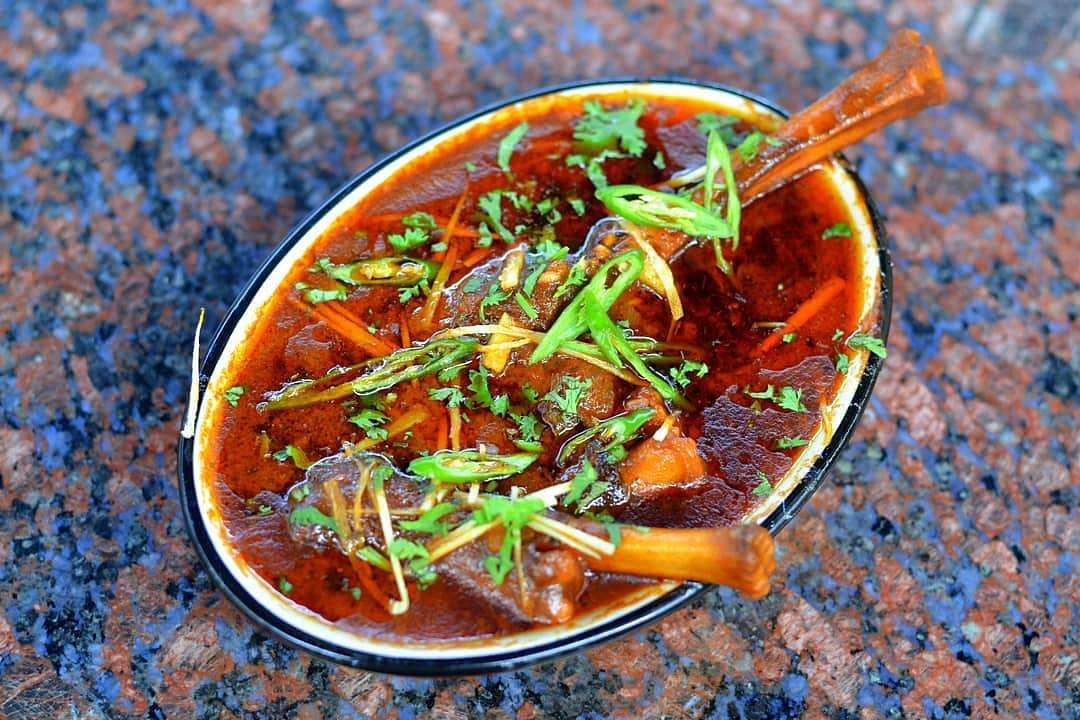Whats in a Nihari ? Let's checkout !! Nihari is a stew from the Indian subcontinent consisting of slow-cooked meat mainly shank meat of beef or lamb and mutton, goat meat and chicken, along with bone marrow. People cooked it for one whole night and they got it in the early morning at sunrise. The dish is known for its spiciness and taste.
The word “Nihar” originated from the Arabic word, “Nahar” which means “morning”. It was originally eaten by Nawabs in the Mughal Empire as a breakfast item after their morning prayers.Nihari was developed in Old Delhi, India, during the reign of the Mughal Empire. Muslim Nawabs (Noblemen) would eat Nihari after their sunrise prayers (Fajr), after which they would take naps until the afternoon Muslim prayers (Zhuhr). It later became a regular breakfast dish for the working class due to its energy-boosting properties.Nihari used to be slow-cooked overnight in large pots in order to be given to labourers when they participated in the substantial construction projects sanctioned by the empire. Nihari was served free to labourers.
Nihari tastes best when had with khameeri roti, naan or phulka. It is said that the Nihari is so heavy on the stomach that in olden days, the nobles ate a plate of it and took a nap till the zohar or afternoon prayers.That’s why they say "Nihari is to winter what Haleem is to Ramzan!!!" Interesting titbit:
In some restaurants, a few kilos from each day's leftover Nihari is added to the next day's pot. This re-used portion of Nihari is called taar and is believed to provide a unique flavor. Some Nihari outlets in old Delhi boast of an unbroken taar going back more than a century.
#food #yummy #blogger #foodporn #foodclick #foodgasm #hyderabadi #foodstagram #instalike #instafoodgram #indianfoodbloggers #indianbloggers #food52 #nihari #indiafood #paya #foodofinstagram #foodies #foodmaniacindia #foodlovers #instafoodporn #nallinihari #followforfollow #gastrohogger #nalli
The word “Nihar” originated from the Arabic word, “Nahar” which means “morning”. It was originally eaten by Nawabs in the Mughal Empire as a breakfast item after their morning prayers.Nihari was developed in Old Delhi, India, during the reign of the Mughal Empire. Muslim Nawabs (Noblemen) would eat Nihari after their sunrise prayers (Fajr), after which they would take naps until the afternoon Muslim prayers (Zhuhr). It later became a regular breakfast dish for the working class due to its energy-boosting properties.Nihari used to be slow-cooked overnight in large pots in order to be given to labourers when they participated in the substantial construction projects sanctioned by the empire. Nihari was served free to labourers.
Nihari tastes best when had with khameeri roti, naan or phulka. It is said that the Nihari is so heavy on the stomach that in olden days, the nobles ate a plate of it and took a nap till the zohar or afternoon prayers.That’s why they say "Nihari is to winter what Haleem is to Ramzan!!!" Interesting titbit:
In some restaurants, a few kilos from each day's leftover Nihari is added to the next day's pot. This re-used portion of Nihari is called taar and is believed to provide a unique flavor. Some Nihari outlets in old Delhi boast of an unbroken taar going back more than a century.
#food #yummy #blogger #foodporn #foodclick #foodgasm #hyderabadi #foodstagram #instalike #instafoodgram #indianfoodbloggers #indianbloggers #food52 #nihari #indiafood #paya #foodofinstagram #foodies #foodmaniacindia #foodlovers #instafoodporn #nallinihari #followforfollow #gastrohogger #nalli

